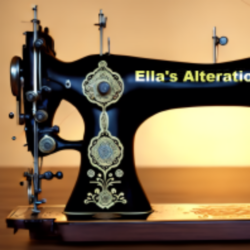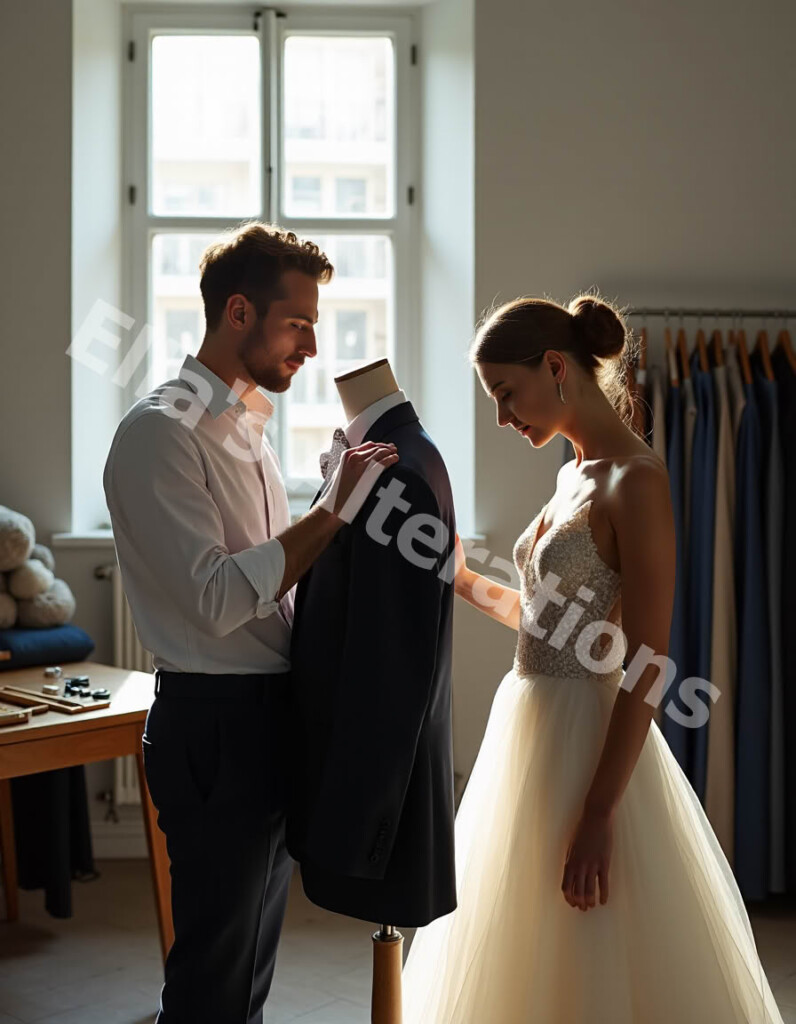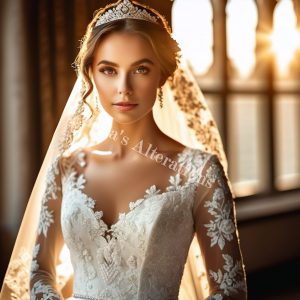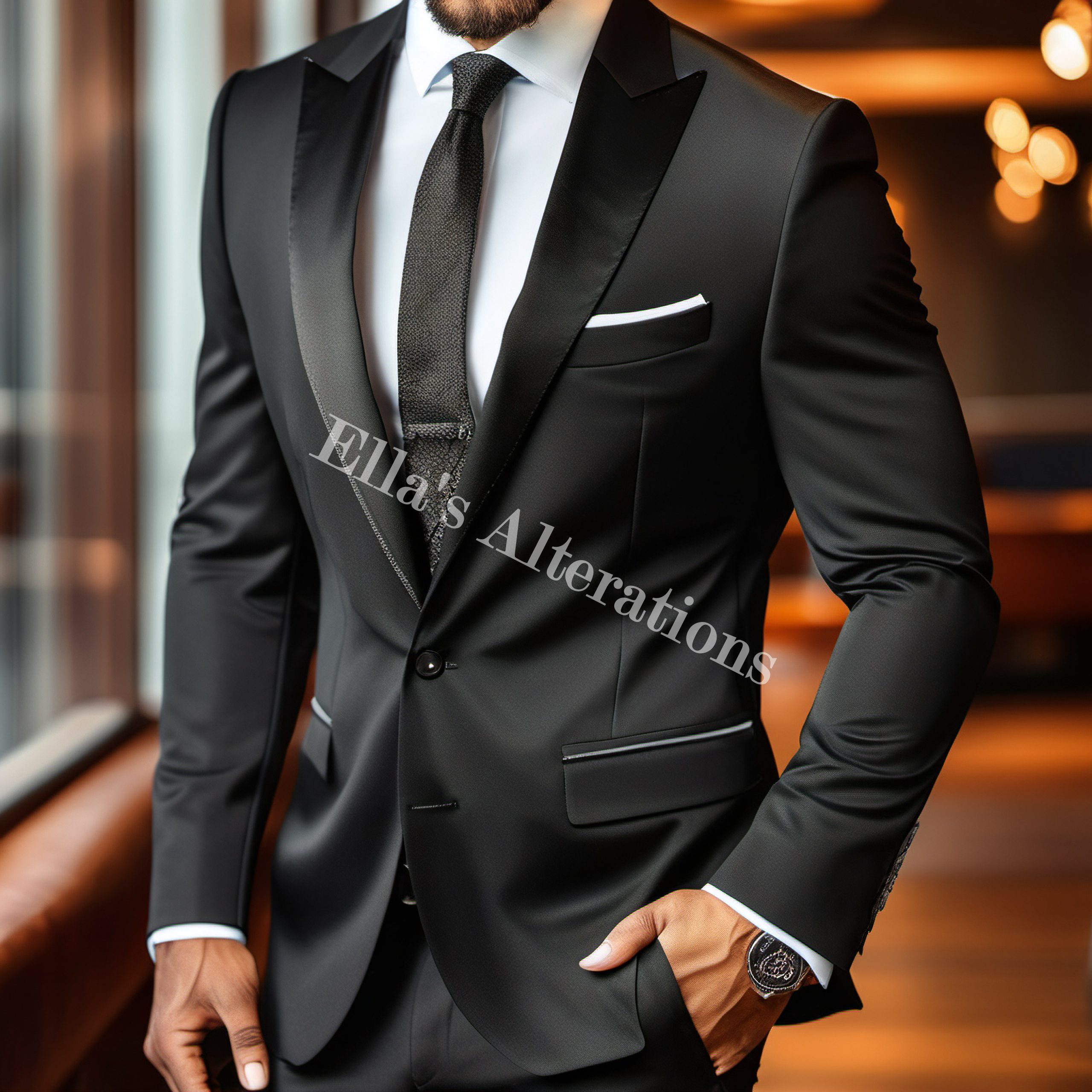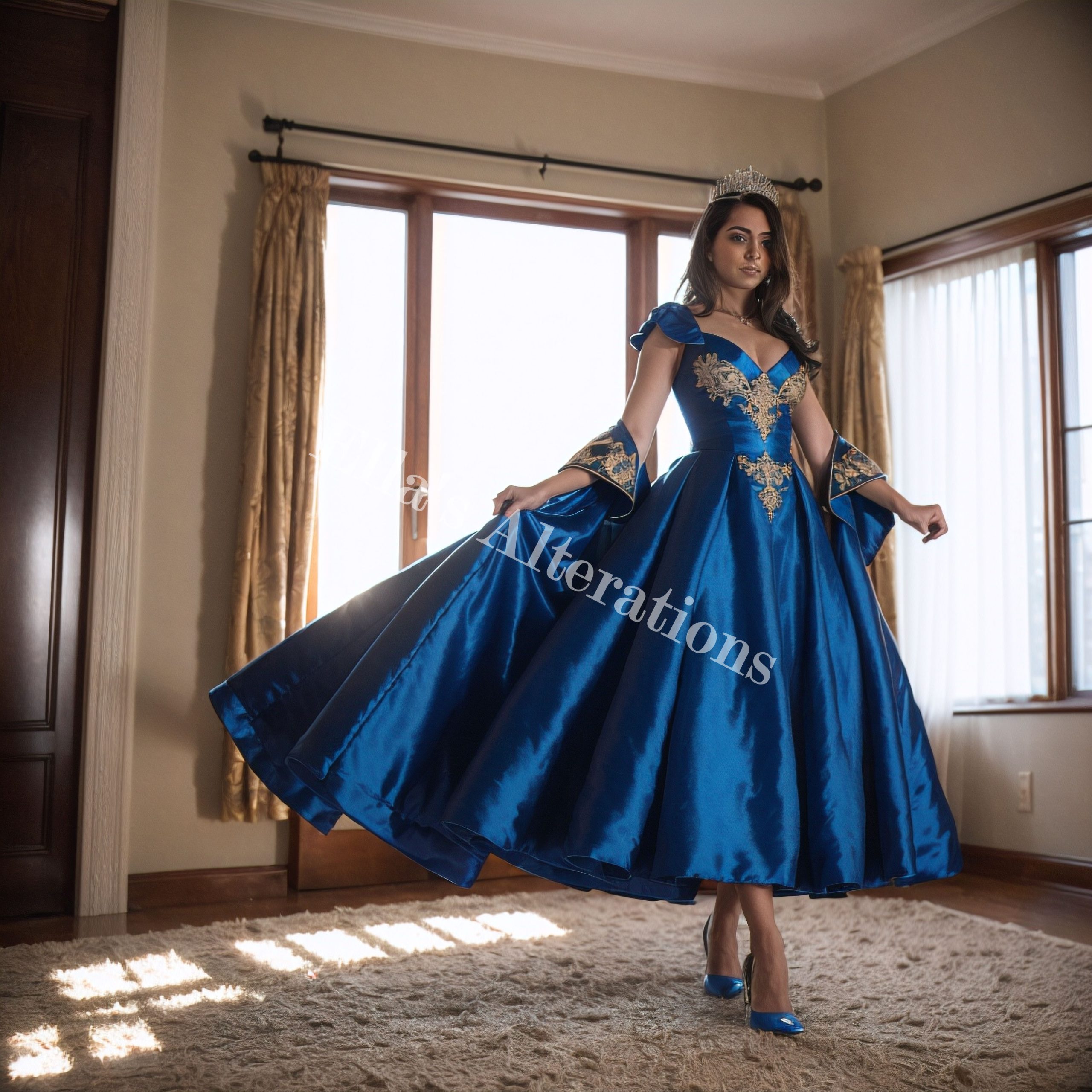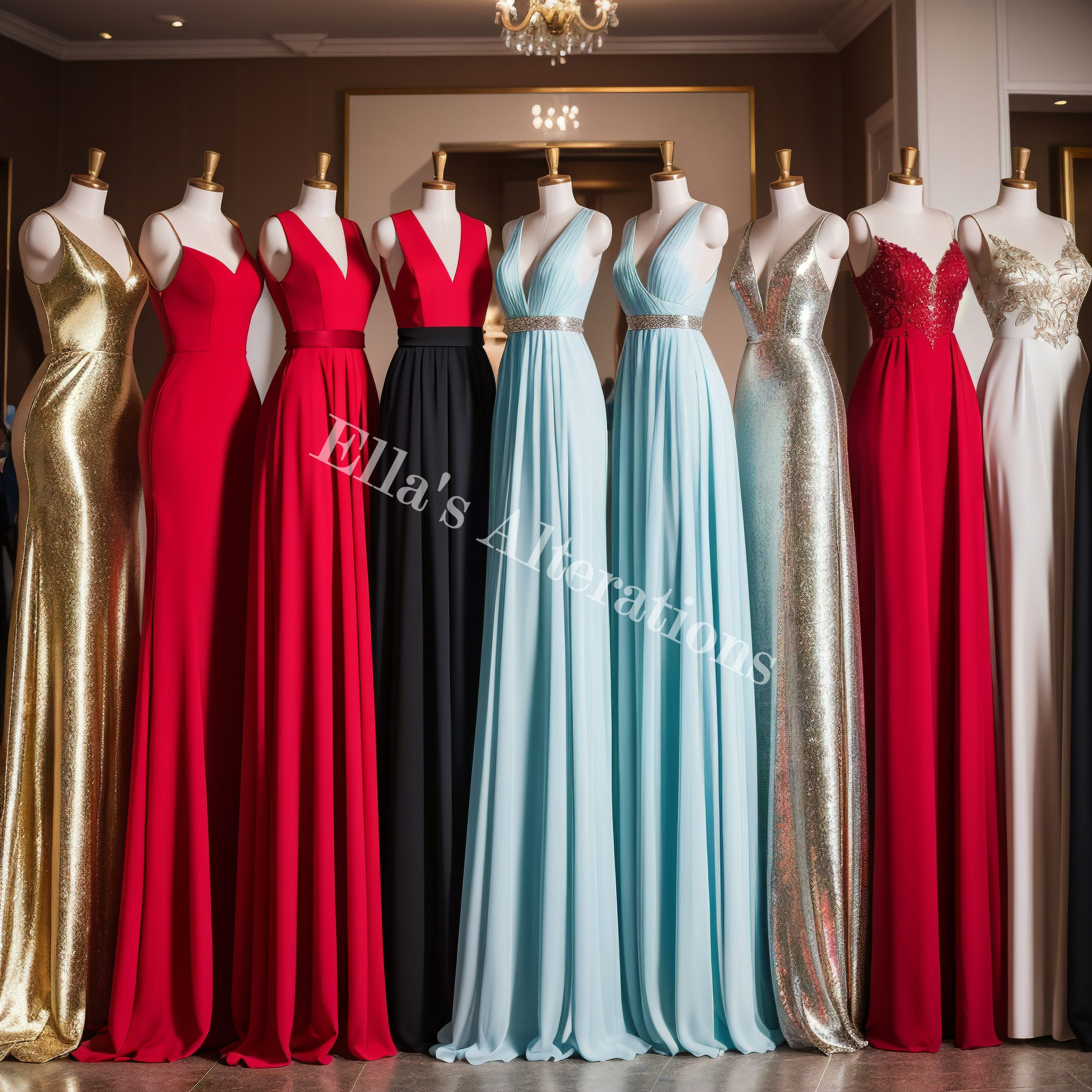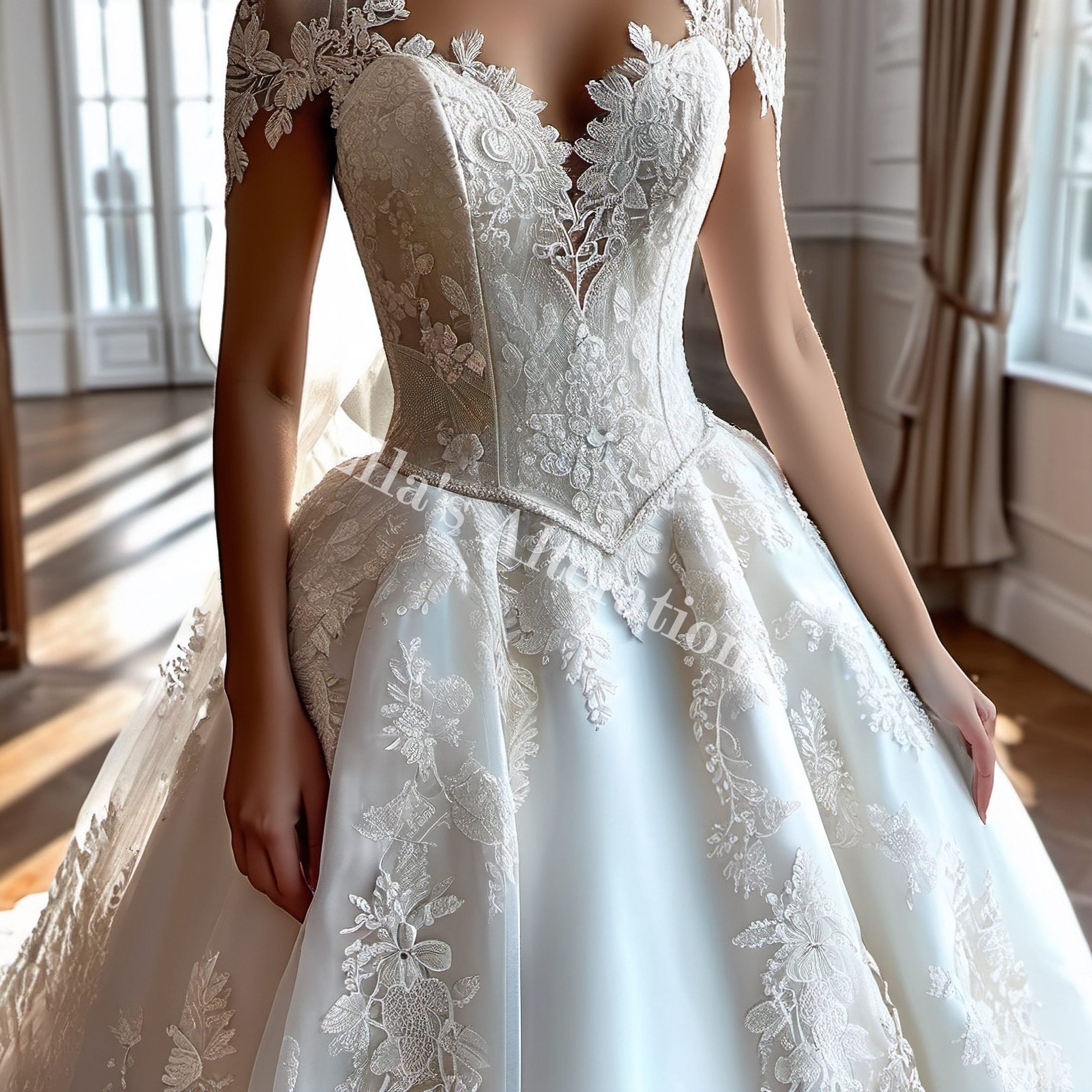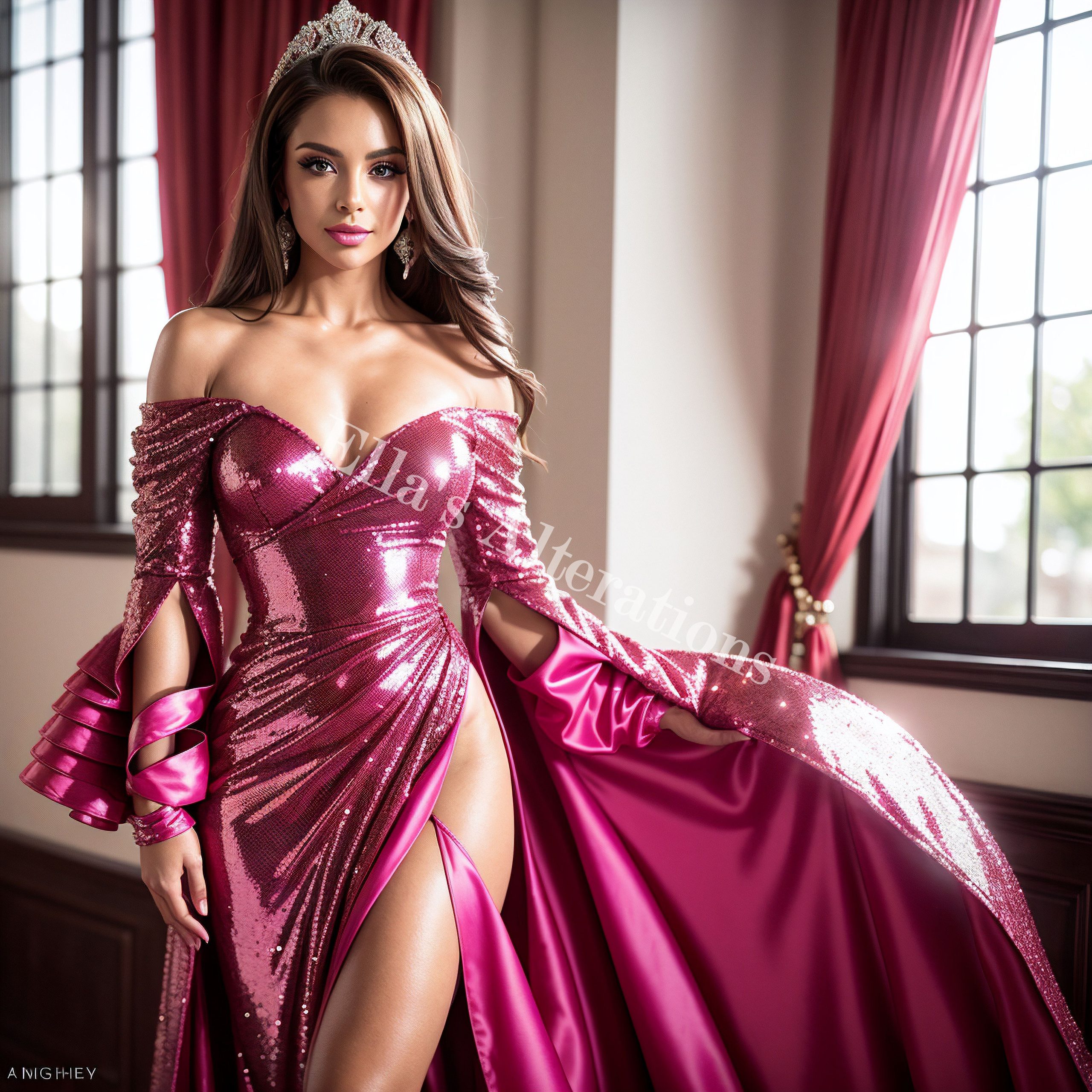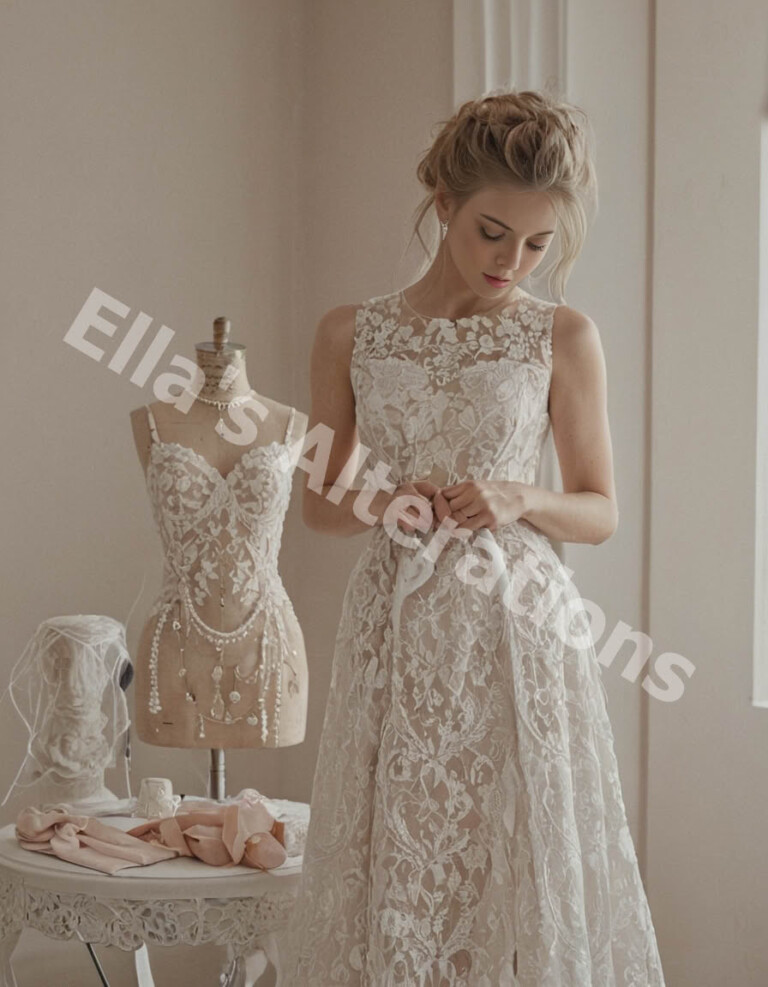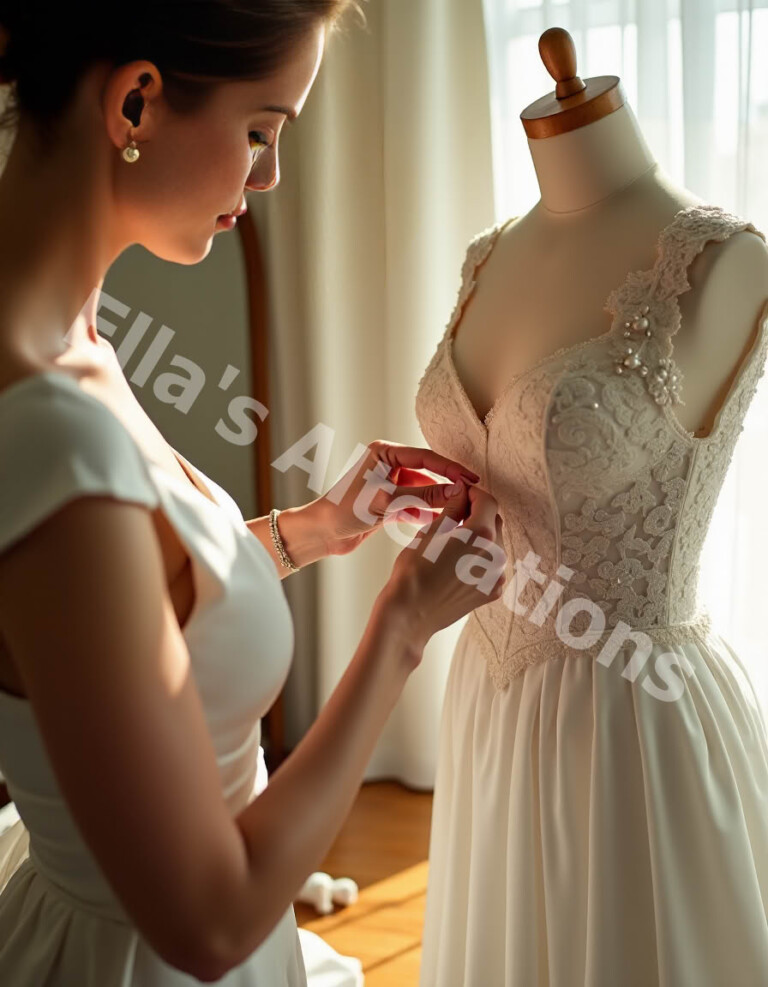Thread Wars: Seamstress vs Tailor, Choose Wisely.
Stitch, Snip, or Suit Up: Decoding Seamstresses and Tailors.
Introduction: Why Your Wardrobe Deserves Better Than a Quick Fix:
When it comes to clothing alterations, most people think of it as a quick in-and-out task — a loose button here, a hem adjustment there, maybe a nip at the waist.
But what if we told you that your wardrobe deserves more than just a snip and a stitch?
What if your favorite gown, power suit, or tailored trousers could fit like they were made just for you?
Because the truth is, they should — and that transformation starts with knowing who to trust: the tailor or the seamstress.
Here’s the reality.
Too often, people hand their garments over to someone who happens to own a sewing machine and hope for the best.
The result?
Crooked hems, puckered seams, poor fits, and ruined fabric.
Why?
Because not all sewing professionals are created equal.
There is a world of difference between someone who alters clothes and someone who understands them.
Between someone who patches a tear and someone who reshapes a garment with architectural precision.
Tailors are highly trained professionals.
Their background typically includes formal education, apprenticeships, and years of hands-on experience.
They understand textiles at the fiber level.
They know how a jacket drapes, how darts shape a dress, how fabric behaves when stretched, steamed, or layered.
They don’t just take measurements — they read your posture, your proportions, your style. They’re not simply making clothes smaller or shorter.
They’re reengineering them to suit your body with elegance and structure.
Seamstresses, on the other hand, are often self-taught.
Some might have a decent hand at mending or sewing curtains.
Others may have taken up the craft as a hobby, picking up bits of knowledge here and there.
While that doesn’t automatically mean their work is poor, it does mean their experience is typically limited.
Most lack in-depth knowledge of garment construction, fabric tension, or even proper fitting.
They're usually not equipped to handle complex adjustments, especially on formalwear or designer pieces.
The risk of relying on an unqualified seamstress is highest when the stakes are, too.
Think wedding dresses, custom suits, cocktail gowns — pieces that are meant to make a statement.
It only takes one mistake to ruin delicate lace, misalign a sleeve, or warp the shape of a carefully constructed garment.
A tailor knows how to avoid those disasters.
They consider the original cut, the type of fabric, the flow, the finish.
They match your movement and your personality to the garment.
This is not just about fashion. It’s about investment, confidence, and self-expression.
Clothes are a visual extension of who you are, and how they fit determines how they make you feel.
A great tailor can transform something average into something exceptional.
A poor alteration can make even a luxury piece look secondhand.
That’s why choosing the right professional is essential.
So when you’re debating whether to drop your blazer off with “that lady who does hemming” or take it to a seasoned tailor, ask yourself: Am I just fixing fabric — or am I refining my style?
Every stitch matters.
Every seam has a story.
And your wardrobe?
It deserves a happy ending — the kind only a tailor can deliver.
Stitch Snip or Suit Up Decoding Seamstresses and Tailors Questions.
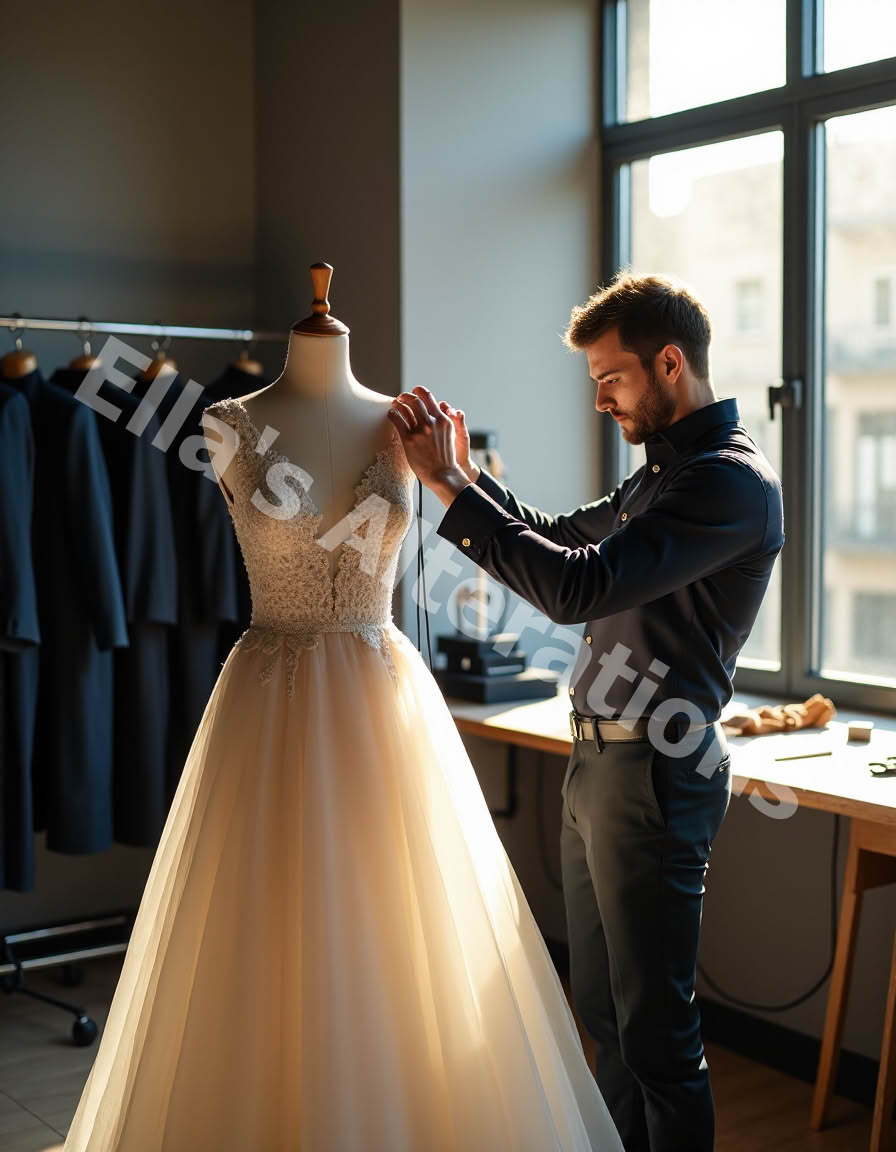
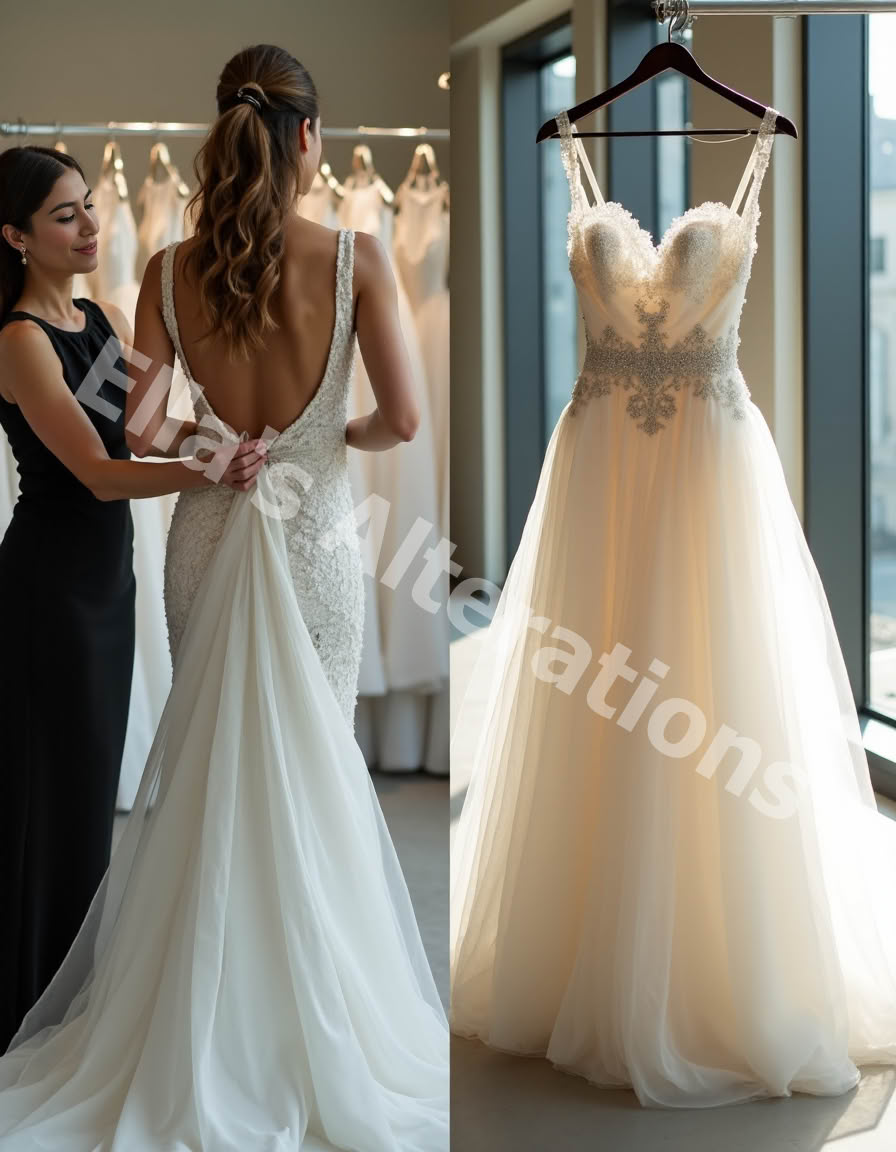
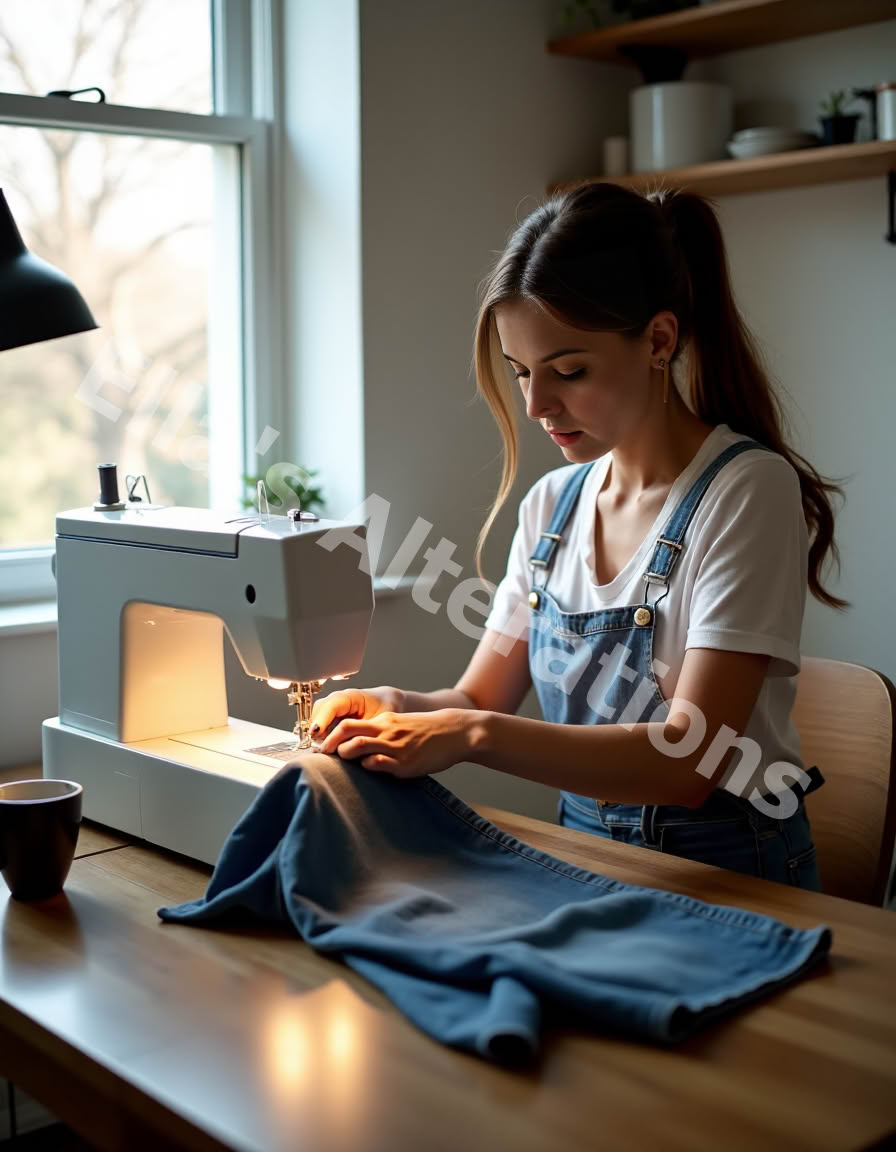

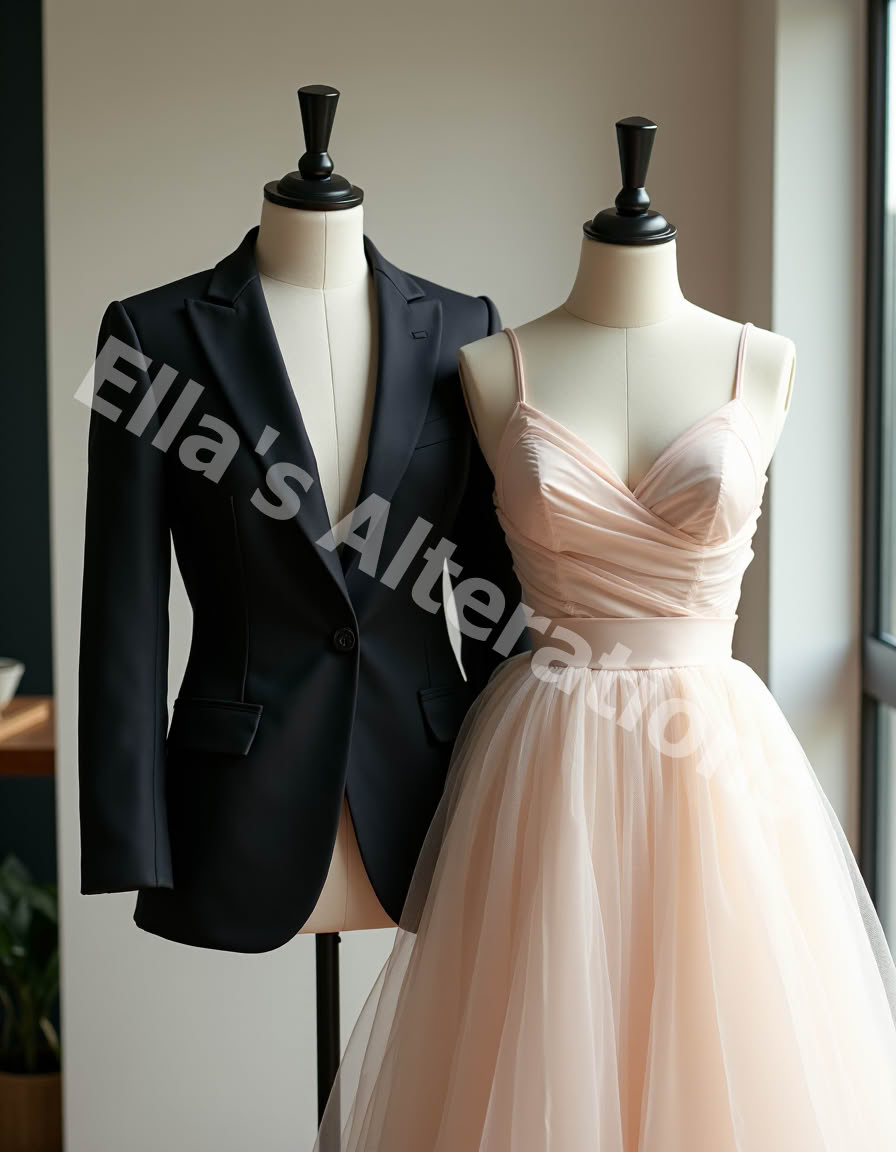
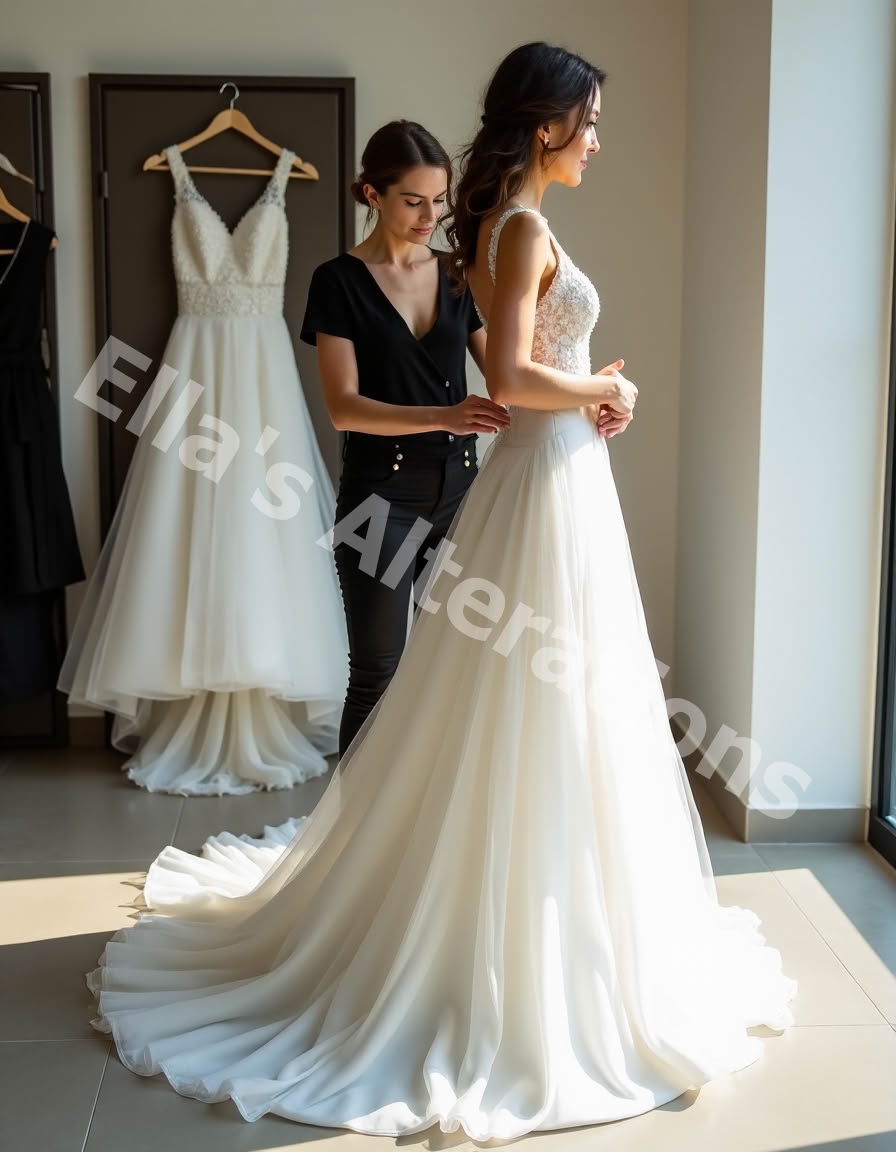
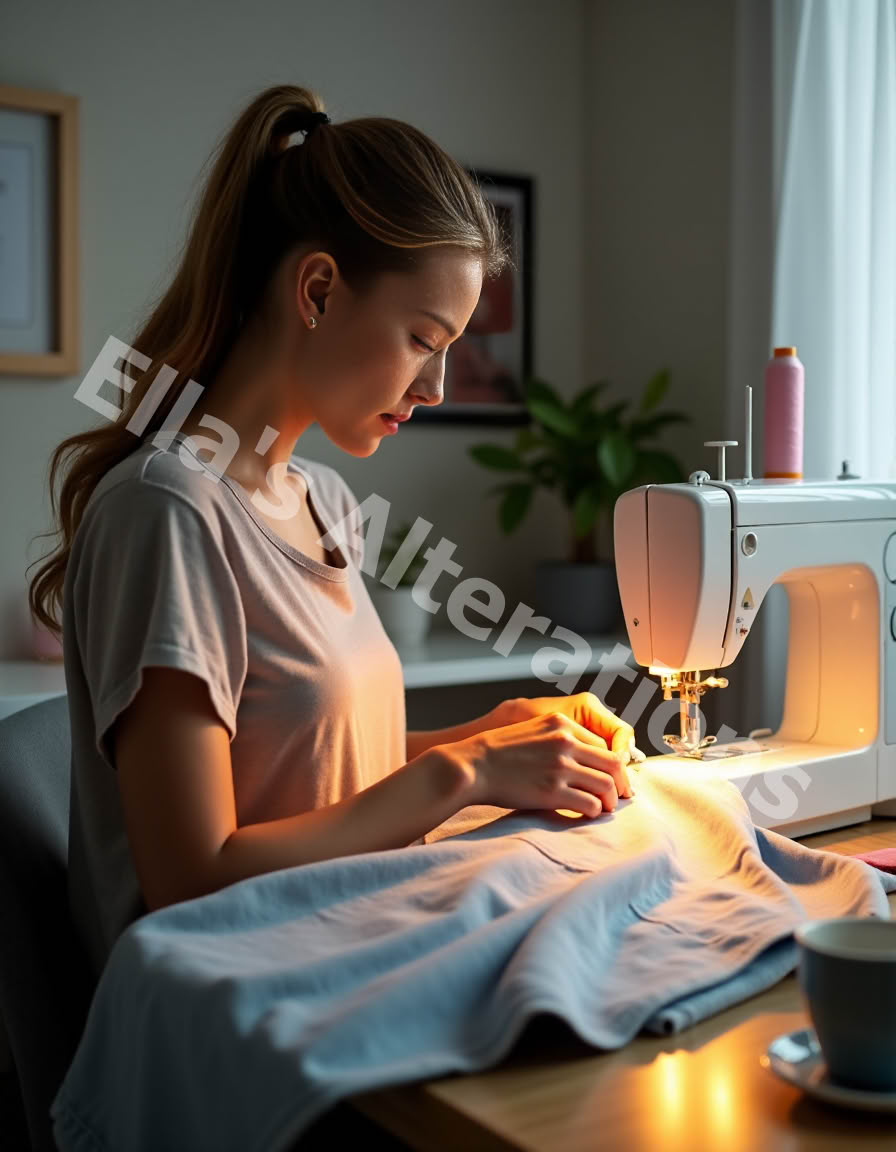

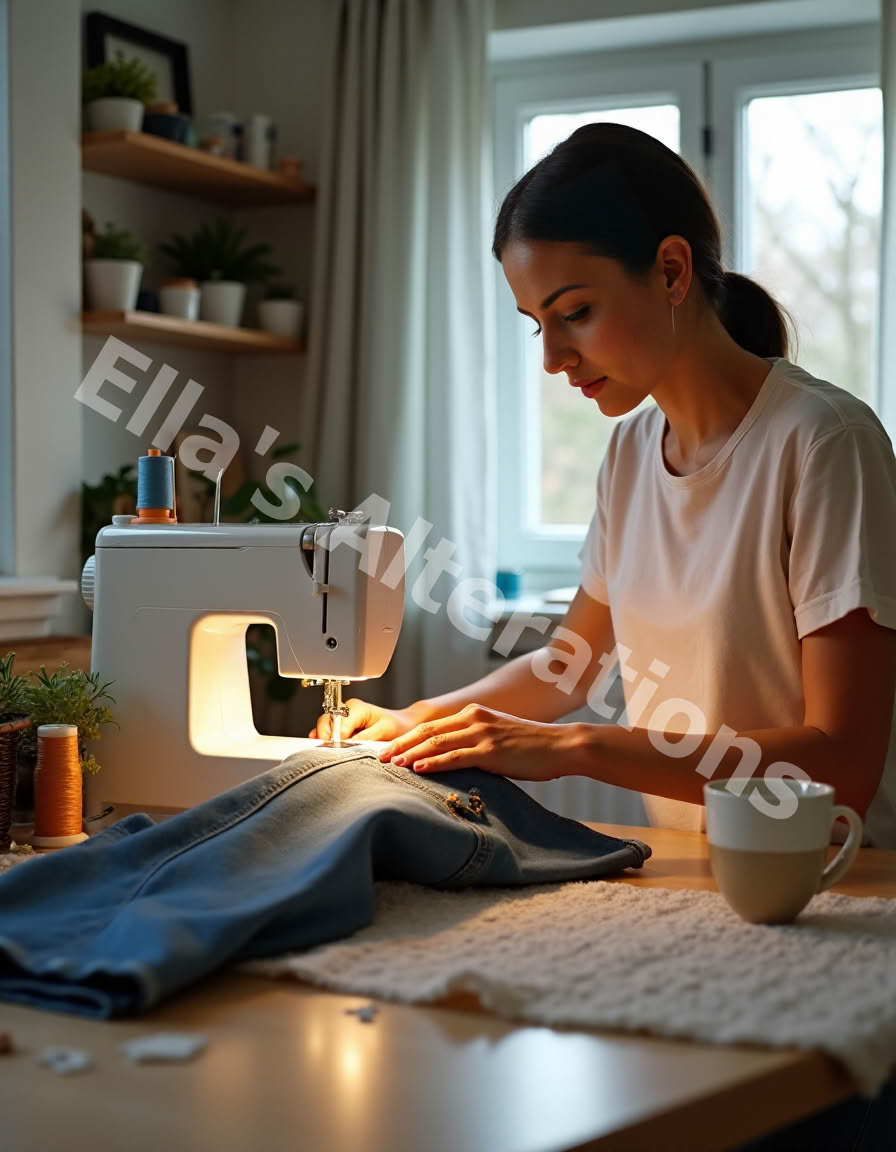
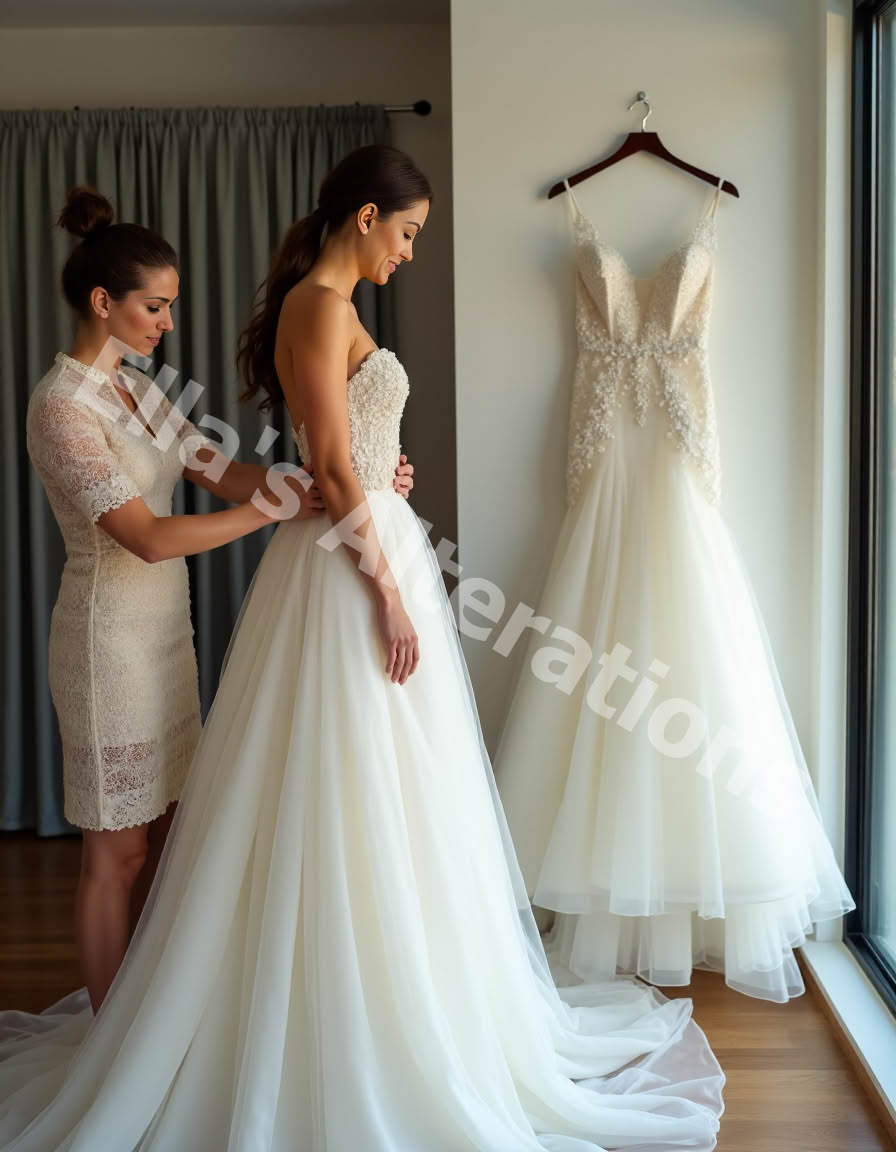
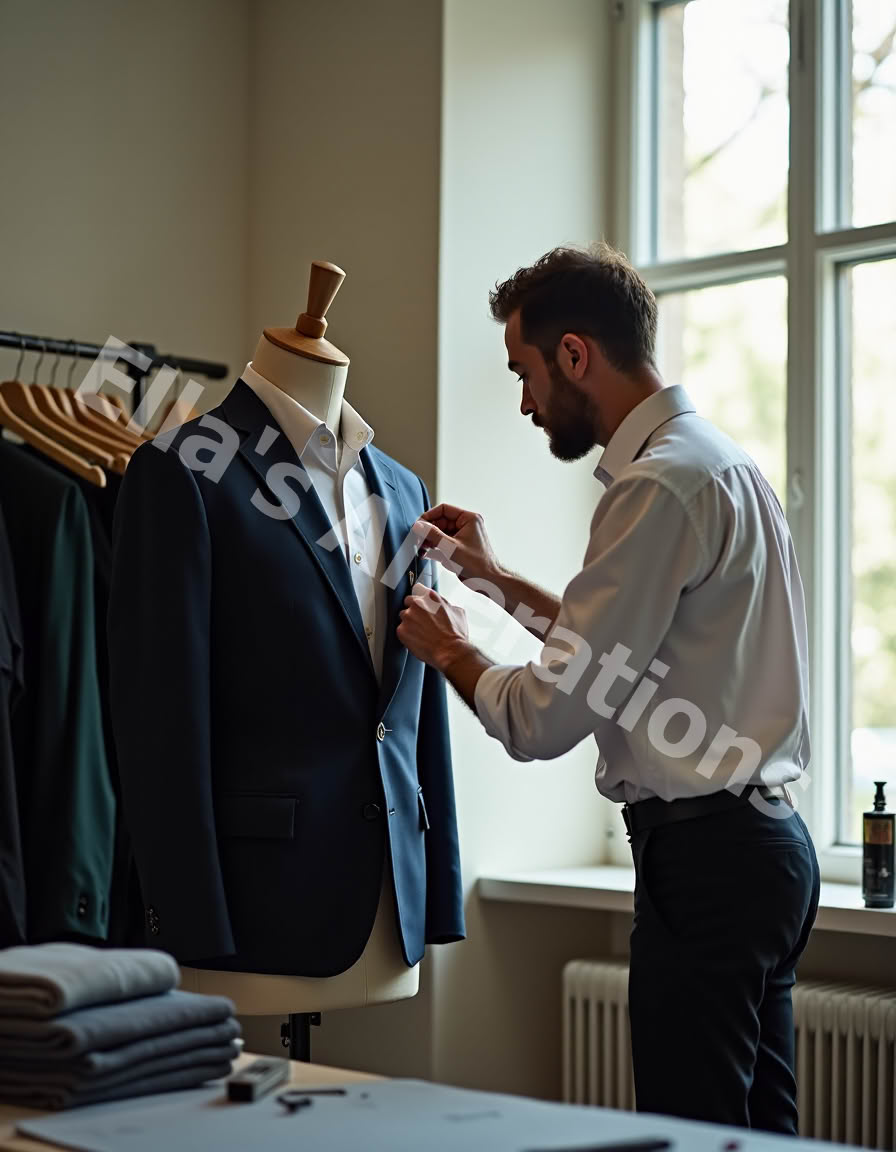
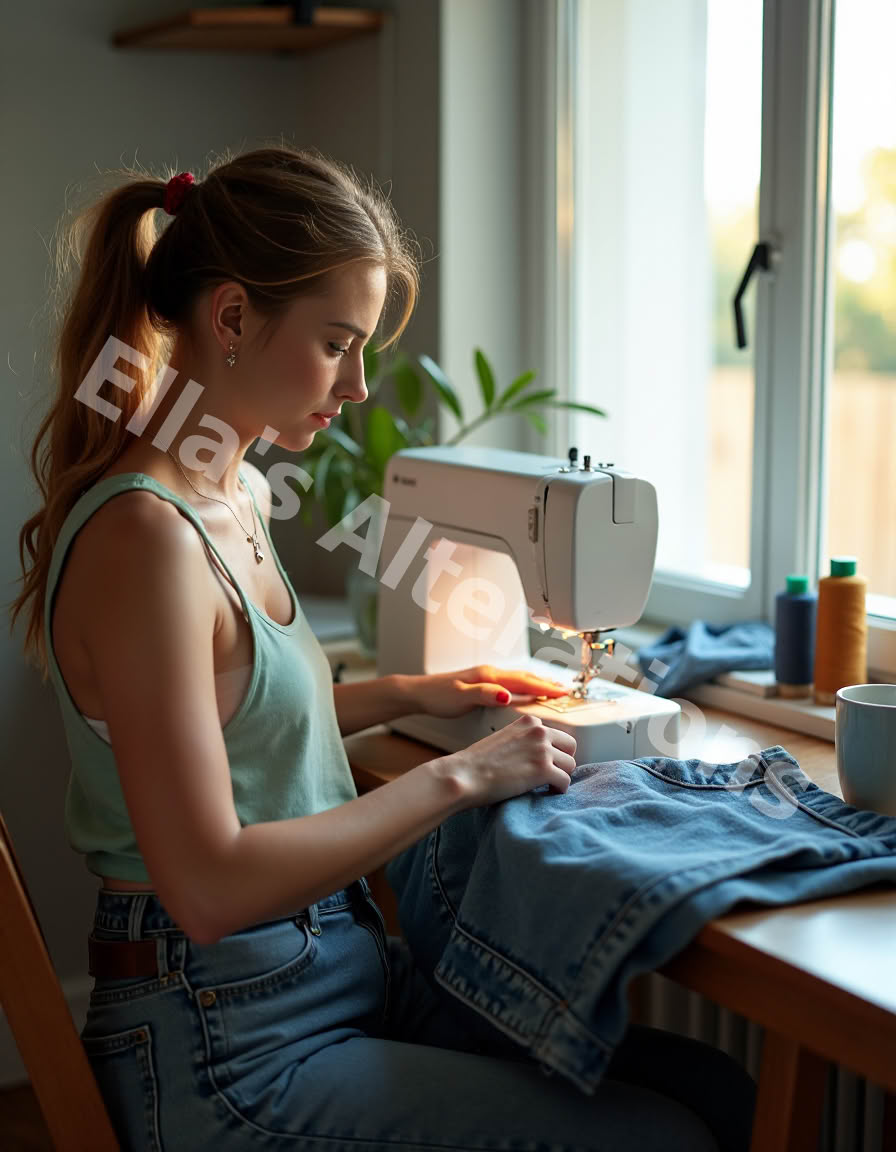
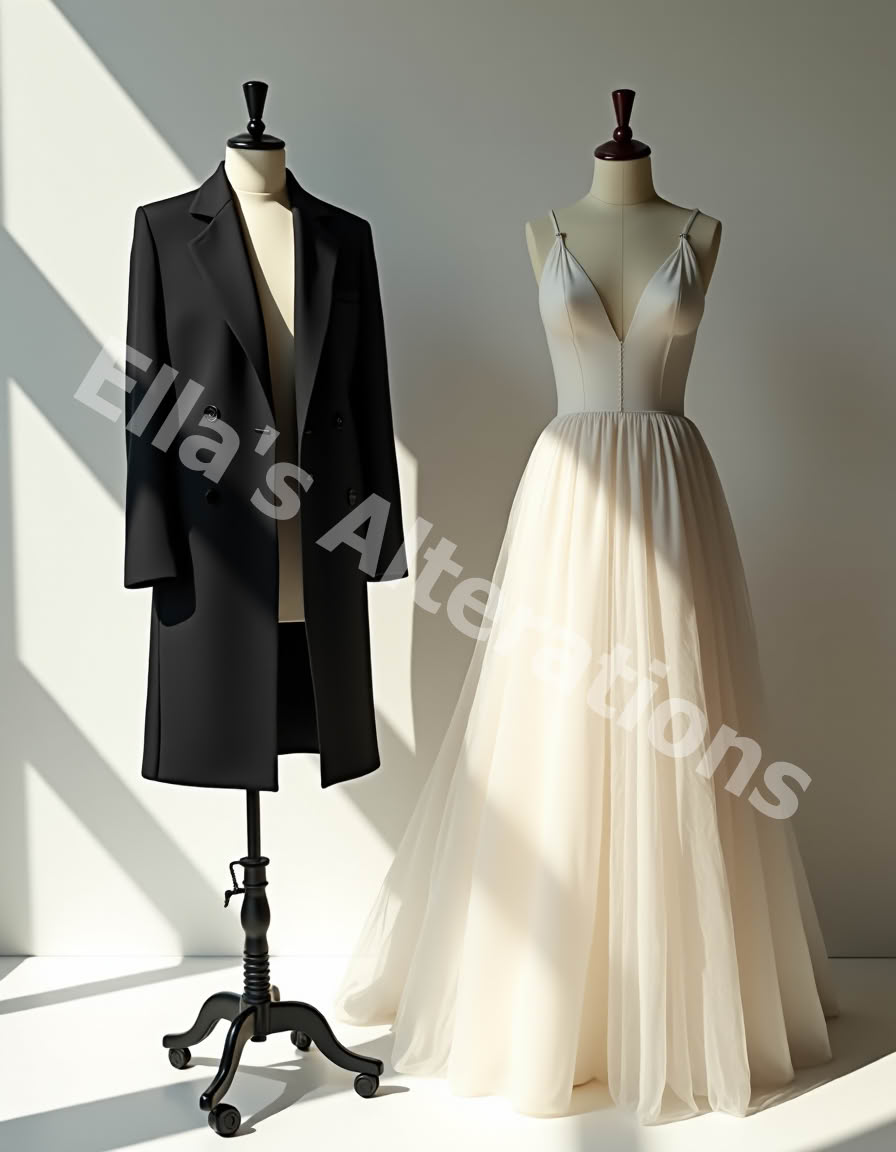
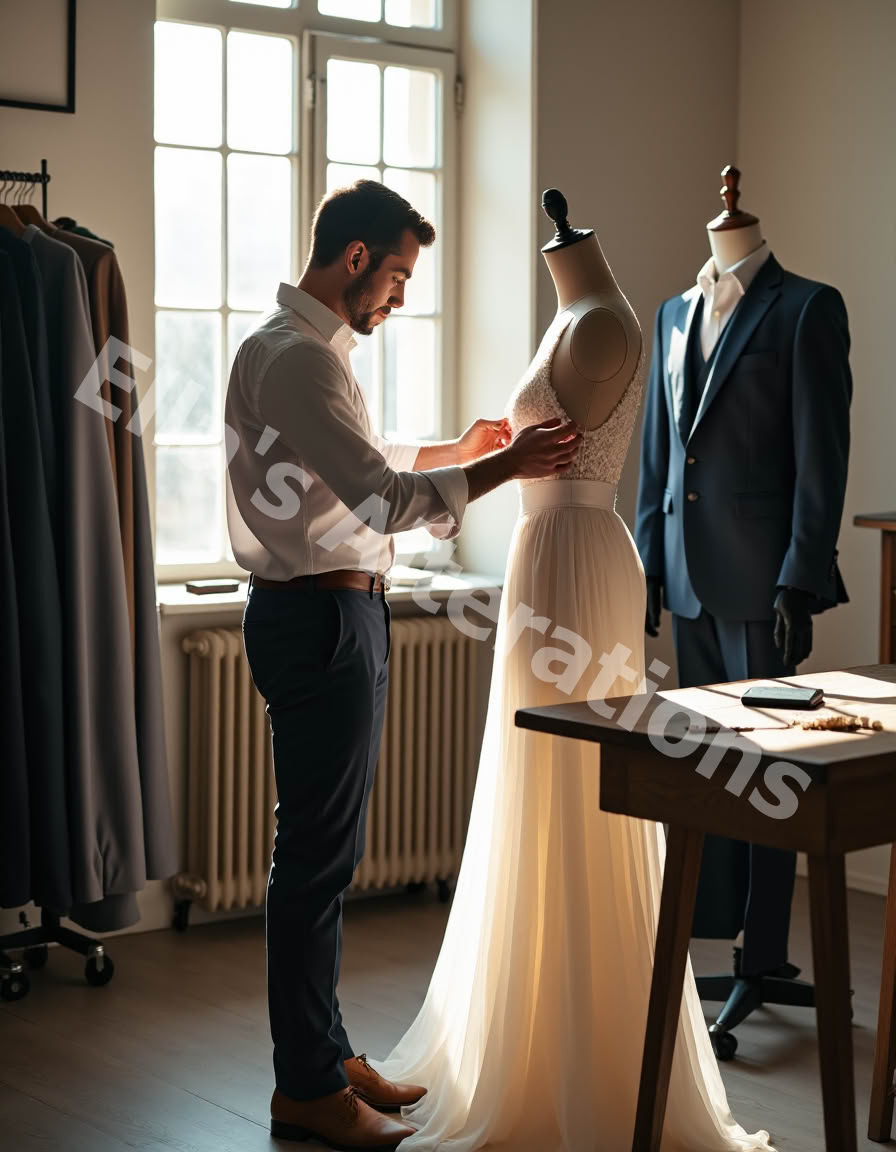
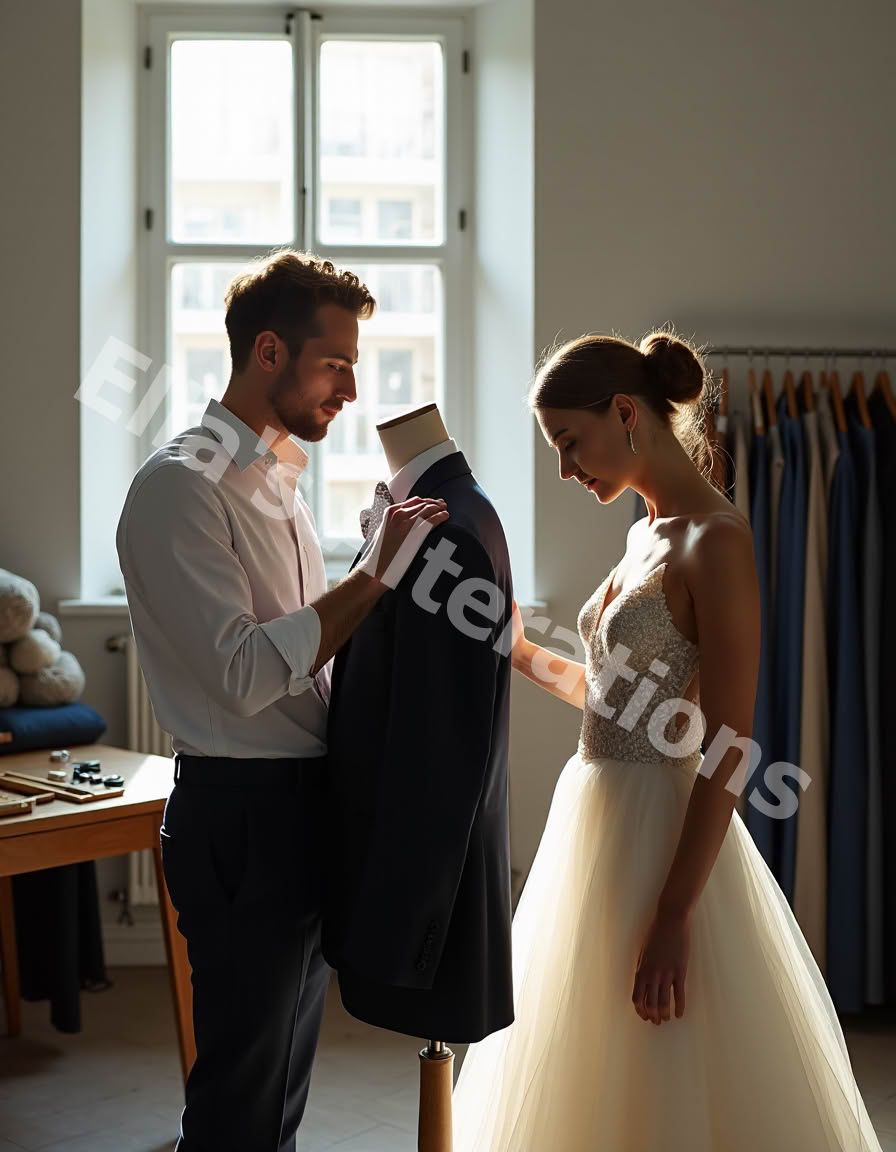
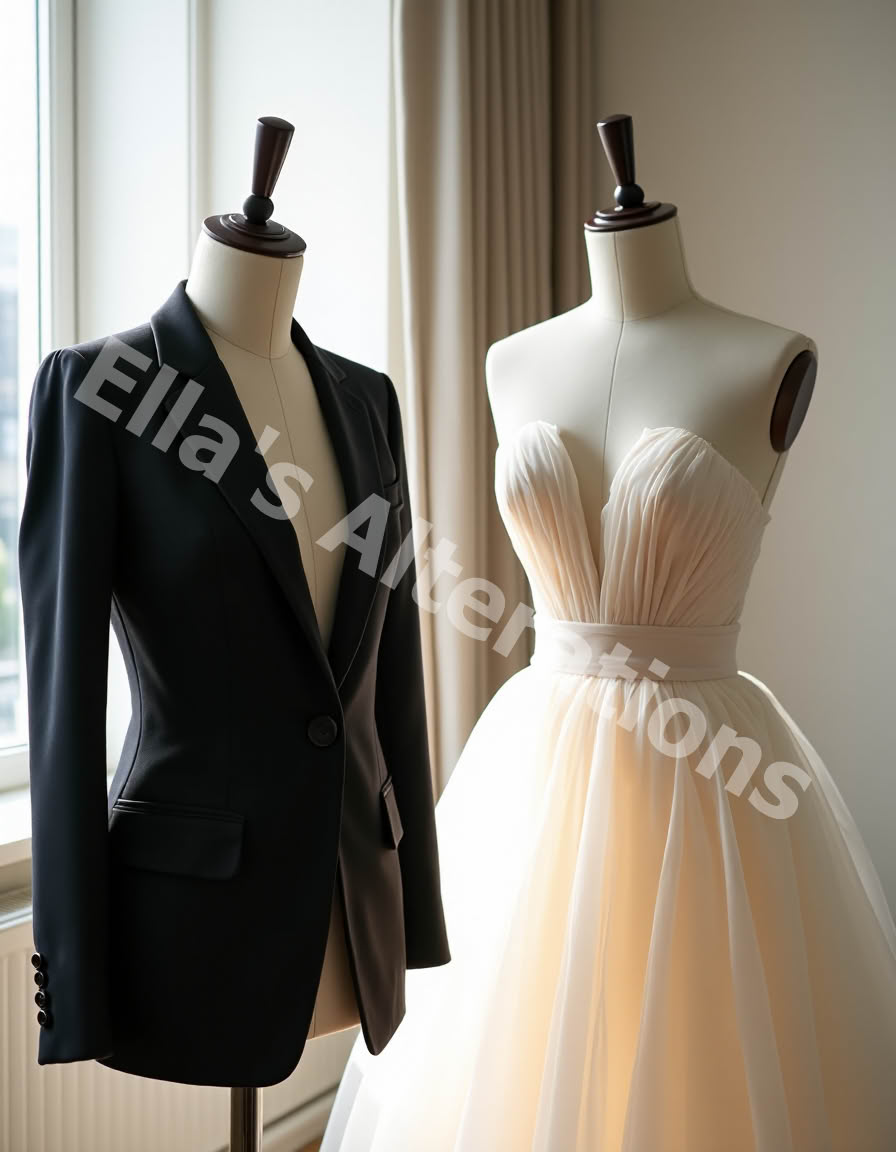
What Even Is a Seamstress? The Harsh Truth:
The word “seamstress” often carries an old-fashioned charm — it conjures images of someone sweetly hunched over a sewing machine, carefully threading a needle and patching up worn hems.
But in today’s fashion landscape, the reality behind the title is far less romantic.
In truth, most modern seamstresses are not trained professionals.
They are individuals who may own a sewing machine, know a few basic stitches, and offer their services with minimal experience or understanding of garment structure.
And when it comes to trusting someone with your clothing — especially your investment pieces — that’s a serious red flag.
Let’s break it down.
A seamstress is typically someone who performs basic alterations and sewing tasks.
These might include hemming pants, repairing seams, or taking in simple garments.
There’s no requirement for formal training, no certification, and often no apprenticeship.
Many pick up the trade as a hobby or side hustle.
Some may have learned through YouTube tutorials or informal practice.
And while that’s commendable in the context of casual home sewing, it’s a major gamble when applied to structured fashion, bridalwear, or couture.
You see, sewing and tailoring aren’t interchangeable.
Sewing is a mechanical skill — stitching fabric together.
Tailoring is an art that involves shaping, engineering, and design.
A seamstress might be able to shorten a sleeve, but ask her to alter a fitted gown with layered silk or reposition darts on a wool blazer, and you’re likely in trouble.
Without understanding fabric behavior, grainline, balance, or fit dynamics, those small changes can snowball into irreversible damage.
And it’s not just the lack of technical knowledge.
It’s the lack of vision.
Tailors understand how a garment should move with your body.
They recognize posture, proportions, and the subtle details that bring shape to fabric.
Seamstresses often work from a place of imitation, not intuition.
They follow the lines already in place rather than knowing when and how to create new ones.
The difference shows up in every stitch. Let’s talk equipment.
Most seamstresses work with basic home machines.
Tailors use professional-grade tools designed for precision, durability, and performance across a range of fabrics.
There’s a reason a tailor’s workshop feels like a well-tuned studio and a seamstress’s space often feels more improvised — because one is a career, the other a convenience.
Of course, this isn’t to say every seamstress is incompetent.
Some have natural talent.
A few may even develop strong skills over time.
But those cases are rare, and they’re not the standard.
The problem is, you don’t always know what you’re getting.
And when your wardrobe — or worse, your wedding dress — is on the line, “maybe she’s good” just doesn’t cut it.
At best, a seamstress is suitable for minor repairs and casual wear.
At worst, they can ruin a designer piece that cost you thousands.
The risk is simply too high.
Whether it’s hemming trousers for an important event or reworking a gown to fit your curves perfectly, expertise matters.
Guesswork is not a luxury you can afford when it comes to how you show up.
So next time someone says, “I know a seamstress,” pause and ask: do they really know how to handle your garment — or do they just know how to thread a bobbin?
Because when it comes to style, confidence, and craftsmanship, settling for less than professional just isn’t the vibe.
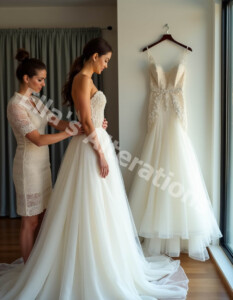
Dress Train Lengths Demystified: From Sweep to Cathedral, What's Your Pick?
Tailors: The Architects of Apparel:
There’s a reason the phrase “tailored to perfection” exists.
It’s not just a compliment — it’s a testament to the kind of precision, care, and craft that only a true tailor brings to the table.
While a seamstress may patch and guess, a tailor plans, constructs, and executes with surgical finesse.
A tailor isn’t just someone who knows how to sew.
They’re an architect of apparel — trained in structure, fluent in fabric, and devoted to the details that transform clothing into wearable artistry.
Tailoring begins with vision.
A professional tailor looks at a garment and immediately sees the blueprint beneath it — how the fabric flows, where it should contour, how it’s meant to sit on the body.
Tailors are trained to understand the architecture of clothing.
They study balance, proportion, grainline, and tension.
They know how a jacket should break, how trousers should fall, and how a bodice should support without constricting.
Their job is to shape fabric not just to fit, but to flatter.
The training involved in tailoring is no small feat.
Most tailors go through years of education, apprenticeships, or mentorships to master their craft.
They don’t just learn to sew — they learn garment construction, pattern drafting, textile science, and fitting techniques that account for every inch of the human form.
Tailors understand how different fabrics behave under heat, pressure, and movement.
They know which stitches work with silk versus wool, how to reinforce seams without bulk, and how to manipulate material so it drapes exactly as it should.
And then there’s the tools.
A tailor’s studio is filled with professional-grade equipment — industrial sewing machines, steam presses, pressing hams, tailor’s chalk, sleeve boards, and countless other specialized instruments.
Everything is designed for accuracy, consistency, and efficiency.
Every cut is calculated.
Every measurement is intentional.
Nothing is left to chance.
One of the most remarkable skills of a tailor is their ability to bring out the best in both the garment and the person wearing it.
Whether they’re working on a wedding gown, a power suit, or a custom jacket, they study the body it’s meant for.
They factor in posture, build, proportions, and even how a person moves.
Tailors don’t just fix clothes — they enhance them.
They make garments an extension of the person.
This is where the true value lies.
Tailoring is about personal expression, about showing up with clothes that feel like they were made just for you — because they were.
It’s not about trends, it’s about timelessness.
A well-tailored piece never looks dated.
It fits you in the moment, and it fits your life beyond it.
That level of quality creates confidence.
You don’t second-guess your outfit when it’s tailored.
You just know you look good.
Tailors are the reason a basic blazer becomes a power move.
They’re the ones who turn a shapeless dress into a showstopper.
They give form to fabric and confidence to clients.
Their skill is the difference between a garment that just sits on your body and one that celebrates it.
So while others might offer “quick and cheap,” tailors deliver crafted and lasting.
They don’t guess — they measure, fit, and sculpt.
They’re not just sewing — they’re building fashion from the inside out.
If you want your clothes to fit like they were always meant to, you don’t need a patch job.
You need a professional. You need a tailor.
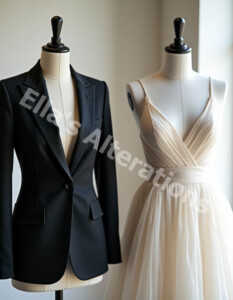
When It Comes to Alterations, Precision Isn’t Optional:
Clothing alterations are not just about making something “smaller” or “shorter. ”
They’re about balance, proportion, and preserving the integrity of the original garment.
That’s why when it comes to altering clothes — especially suits, gowns, or designer pieces — precision isn’t a luxury, it’s a requirement.
Every snip of the scissors, every dart adjusted, every seam reshaped has a ripple effect.
And if those changes aren’t made with careful intention, the entire garment can lose its shape, style, and function.
You might think a hem is just a hem — but even something that simple affects how a garment falls, moves, and looks on your body.
If the cut is crooked, or the fold adds bulk, suddenly that sleek line you loved is gone.
Now picture what happens when someone inexperienced starts altering a bodice, adjusting sleeves, or moving a zipper without understanding how those changes affect the entire design.
One misaligned seam can throw off the neckline.
An uneven sleeve can make your entire upper body look off-balance.
This is where the difference between a tailor and a seamstress becomes unmistakable.
Tailors operate with surgical precision.
They understand that garments are 3D structures, engineered to work with the human form.
When they make alterations, they factor in symmetry, posture, muscle movement, and fabric stretch.
They don’t just measure — they analyze.
A good tailor knows that half an inch off the waist could shift the way a dress hugs your hips.
That lifting a hem might also require reshaping the side seams.
Every adjustment is done with purpose, always maintaining the garment’s original structure and ensuring the final result flatters the wearer.
A seamstress, particularly one without advanced training, may not see or consider these finer details.
Their approach tends to be more reactive — pin it here, sew it there, call it a day.
That may work for simple tasks, but with more complex garments, shortcuts lead to visible flaws.
Fabric starts to pucker. Seams look forced. The fit feels “off” — and it is, because the underlying architecture has been disturbed without understanding how to correct it.
Precision is especially critical in formalwear and tailored pieces.
These garments rely on exact lines and clean construction to look sharp.
Whether it’s a tuxedo jacket or an evening gown, the slightest alteration mistake can make it feel — and look — like it doesn’t belong to you.
Tailors ensure your clothing still reflects its intended design after alterations.
They refine without distorting, enhancing the garment’s strengths rather than compromising them.
Even something as seemingly straightforward as pant hemming shows this divide.
A tailor will consider your shoe height, the break at the ankle, the fabric weight, and how the pants move as you walk.
A seamstress may just measure, cut, and sew.
The result?
One looks made for you.
The other looks like you outgrew your trousers.
In fashion, details are everything.
A perfect alteration is invisible — it blends so seamlessly that no one can tell the garment was changed.
That level of mastery doesn’t happen by accident.
It comes from skill, experience, and an obsession with precision.
Tailors don’t just fix clothes.
They elevate them.
They refine them.
They make sure every alteration honors the original design and enhances the final look.
So if you’re trusting someone with your clothes, ask yourself: are they trained to cut with purpose and stitch with precision — or are they just guessing and hoping it works?
Because with fashion, there’s no room for “close enough. ” Precision is the point.
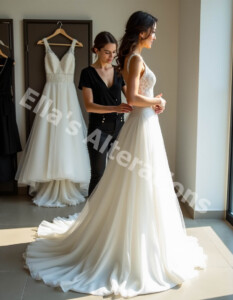
Don't Settle for Less: Tailor vs Seamstress - The Ultimate Guide to Choosing the Right Professional.
Seamstresses: Suitable Only for Simple Mends?:
There’s a reason the phrase “tailored to perfection” exists.
It’s not just a compliment — it’s a testament to the kind of precision, care, and craft that only a true tailor brings to the table.
While a seamstress may patch and guess, a tailor plans, constructs, and executes with surgical finesse.
A tailor isn’t just someone who knows how to sew.
They’re an architect of apparel — trained in structure, fluent in fabric, and devoted to the details that transform clothing into wearable artistry.
Tailoring begins with vision.
A professional tailor looks at a garment and immediately sees the blueprint beneath it — how the fabric flows, where it should contour, how it’s meant to sit on the body.
Tailors are trained to understand the architecture of clothing.
They study balance, proportion, grainline, and tension.
They know how a jacket should break, how trousers should fall, and how a bodice should support without constricting.
Their job is to shape fabric not just to fit, but to flatter.
The training involved in tailoring is no small feat.
Most tailors go through years of education, apprenticeships, or mentorships to master their craft.
They don’t just learn to sew — they learn garment construction, pattern drafting, textile science, and fitting techniques that account for every inch of the human form.
Tailors understand how different fabrics behave under heat, pressure, and movement.
They know which stitches work with silk versus wool, how to reinforce seams without bulk, and how to manipulate material so it drapes exactly as it should.
And then there’s the tools.
A tailor’s studio is filled with professional-grade equipment — industrial sewing machines, steam presses, pressing hams, tailor’s chalk, sleeve boards, and countless other specialized instruments.
Everything is designed for accuracy, consistency, and efficiency.
Every cut is calculated. Every measurement is intentional.
Nothing is left to chance.
One of the most remarkable skills of a tailor is their ability to bring out the best in both the garment and the person wearing it.
Whether they’re working on a wedding gown, a power suit, or a custom jacket, they study the body it’s meant for.
They factor in posture, build, proportions, and even how a person moves.
Tailors don’t just fix clothes — they enhance them.
They make garments an extension of the person.
This is where the true value lies.
Tailoring is about personal expression, about showing up with clothes that feel like they were made just for you — because they were.
It’s not about trends, it’s about timelessness.
A well-tailored piece never looks dated.
It fits you in the moment, and it fits your life beyond it.
That level of quality creates confidence.
You don’t second-guess your outfit when it’s tailored.
You just know you look good.
Tailors are the reason a basic blazer becomes a power move.
They’re the ones who turn a shapeless dress into a showstopper.
They give form to fabric and confidence to clients.
Their skill is the difference between a garment that just sits on your body and one that celebrates it.
So while others might offer “quick and cheap,” tailors deliver crafted and lasting.
They don’t guess — they measure, fit, and sculpt.
They’re not just sewing — they’re building fashion from the inside out.
If you want your clothes to fit like they were always meant to, you don’t need a patch job.
You need a professional. You need a tailor.
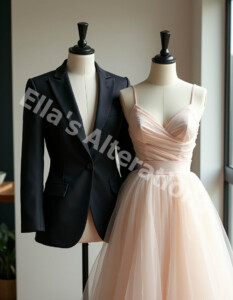
Tailor vs Seamstress: It’s Not Just a Job Title, It’s a Skill Set:
It’s easy to assume “tailor” and “seamstress” are just different labels for the same thing — someone who sews clothes.
But in truth, the gap between the two isn’t just a matter of vocabulary.
It’s a full-on difference in skill set, mindset, and result. One suggests training, technique, and trusted craftsmanship.
The other, more often than not, reflects hobby-level experience and a narrow scope of basic repairs.
So when you’re deciding who to hand your clothes over to, remember — this is about more than titles.
It’s about capability.
Let’s start with the tailor.
A tailor isn’t simply someone who knows how to sew — they are a trained professional with a full grasp of garment engineering.
Tailors understand construction from the inside out.
They draft patterns, cut fabric with purpose, and fit clothing to individual bodies with expert precision.
Whether it’s adjusting a waistline, tapering a sleeve, or completely restructuring a suit jacket, a tailor knows how each component of a garment works together to create a flawless whole.
Their skill set is rooted in training — often years of education, apprenticeships, or on-the-job learning under experienced professionals.
A seamstress, by contrast, usually performs more limited work.
The term generally refers to someone who sews as a task, not as a full-spectrum designer or garment technician.
Seamstresses tend to focus on simpler jobs like hemming pants, fixing rips, or taking in loose seams.
Many are self-taught.
While some have an eye for detail and a steady hand, most lack the deep understanding of pattern shaping, garment structure, and textile behavior that tailoring demands.
Tools and techniques also mark a clear divide.
A tailor’s toolkit includes professional-grade machinery, steamers, pressing tools, hand-finished techniques, and sharp measuring skills that reflect their focus on fit and longevity.
Tailors work with everything from fine silks to heavy wools and know exactly how each one should be treated.
Seamstresses often use standard home sewing machines, common threads, and basic techniques better suited for everyday mending rather than high-end or structured garments.
And then there’s the issue of creative problem-solving.
Tailors are trained to analyze and anticipate how changes to one part of a garment will affect the rest.
They can visualize how an altered dart will shift the shape of a bodice or how lifting a hem might require reshaping the side seams to keep balance.
Seamstresses typically work with what’s in front of them.
They may not have the ability — or the confidence — to reimagine how a garment could fit or move better.
That difference in perspective becomes critical when you’re working with formalwear, custom pieces, or clothing that needs to truly fit, not just “sort of work. ”
Tailors don’t just aim for wearable.
They aim for wearable art.
Seamstresses might finish a job quickly, but the results can often feel unfinished, amateur, or short-lived.
Tailors aim for long-lasting precision, with clothing that not only fits well but also looks and feels as though it was made for your body.
So while both professions use a needle and thread, the outcomes are worlds apart.
A seamstress might sew a line.
A tailor reshapes the entire silhouette.
One works with what is.
The other imagines what it could become.
When you’re dressing to impress, express, or elevate, don’t settle for a title — choose the skill set. And more often than not, that means choosing a tailor.
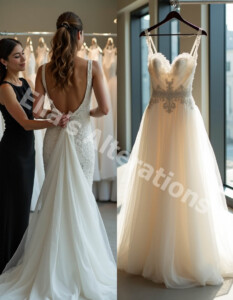
Digging Deeper: More Questions and Answers:
This section tackles five common-but-critical questions that help you navigate real-world scenarios—ranging from hemming advice to wedding gown wisdom.
Read through each scenario carefully, then finish strong with final thoughts that tie the advice into your wardrobe confidence.
1. What should I look for when hiring a professional tailor?
Bold expertise matters more than price.
A reliable tailor uses formal tools—pressing ham, professional sewing machines, tailor’s chalk—and understands fabric types, grain lines, and structural components like darts and interfacing.
Ask about their training or apprenticeship and view before-and-after examples, particularly for garments similar to yours—blazers, wedding dresses, lined trousers.
Notice the precision in seams and hems.
Gauge how well they measure clients, including posture, shoulder slope, and movement.
Quality tailors won’t just “fix” clothes—they reshape, refine, and future-proof them.
2. When is a seamstress an acceptable option?
Choose a seamstress only for simple, low-risk tasks: repairing seams, replacing buttons, patching casual wear, or shortening everyday hems.
Great for non-structured fabrics or pieces you’ll wear infrequently.
Avoid for formalwear, lined garments, or structured items requiring internal changes—like bridal gowns or tailored jackets.
Ask the seamstress about their experience, request samples of similar work, and always begin with a test project.
If all goes well, and the item is casual or inexpensive, a seamstress can offer a practical, affordable solution.
3. Can tailors handle women’s clothing, or is it just men’s suits?
Absolutely—they’re not limited by gender or garment type.
A skilled tailor works across menswear and womenswear: dresses, jackets, gowns, skirts, rompers—you name it.
Their training ensures they understand body shape, fabric drape, design nuances, and functional details—zippers, darts, linings, boning, pleats.
Since they work with textiles deeply, they adapt techniques for weight, stretch, and silhouette.
Don’t let the word “tailor” mislead you.
If they advertise women’s garments or show examples, they’re fully equipped to suit your style—and shape—with expertise.
4. How do alteration costs compare between seamstresses and tailors?
Seamstresses often charge less upfront—typically for basic jobs.
But cost isn’t the only metric.
Tailors charge more because they deliver long-term value.
They take time to analyze fit, adjust construction, and use quality thread, seam finishes, and reinforcing techniques.
That means alterations last longer, hold their shape, and don’t cause fabric damage.
Over time, the cost-per-wear of professionally tailored clothes far outweighs repeated fixes from lower-quality services.
Essentially, tailors offer a superior investment in wardrobe longevity.
5. Can a seamstress really make mistakes on a high-end garment?
Unfortunately, yes—because high-end fabrics (silk, lace, satin, heavy wool) are unforgiving.
One wrong stitch, uneven hemline, or misaligned seam can reveal flaws, weaken fabric structure, or distort shape.
A seamstress without proper training may not know how to support a bodice, reline a skirt, or release pressure at seams.
That’s why wedding dresses, couture jackets, and luxury pieces demand precision. A mistake could mean expensive remakes—or worse, permanent damage.
If it’s a garment you love or invested in, choose expertise to protect it.
Final Thoughts
Every garment you own deserves care that goes beyond quick sewing.
When precision, longevity, and confidence in your appearance matter, a tailor’s rigor and skill are unmatched.
Sure, seamstresses may help with simple fixes and casual wear—but for lines that flatter, fabrics that flow, and fits that feel like second skin, only trained tailoring professionals deliver excellence.
Choose wisely, protect your clothing, and invest in style that lasts.
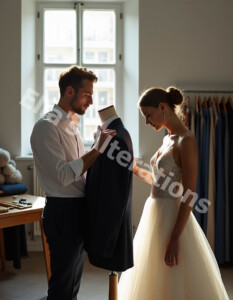
Stitch it Right: Understanding the Difference Between a Tailor and Seamstress.
Conclusion: Choose Tailored Confidence Every Time:
When all is said and stitched, the difference between a seamstress and a tailor is far more than what tools they use or how much they charge — it’s about the level of care, expertise, and precision your clothes receive.
Choosing between the two isn't a matter of convenience, it’s a decision that directly impacts how you look, how you feel, and how long your garments truly last.
That’s why choosing tailored confidence isn’t just smart — it’s essential.
Tailors represent the gold standard in garment care.
Their work reflects years of training, technical finesse, and an intimate understanding of how clothing should perform on the body.
They don’t just alter clothing — they elevate it.
Every adjustment is intentional, every seam shaped to flatter, every piece treated with the respect it deserves.
Whether it’s reshaping the shoulders on a suit jacket, sculpting the waist of a gown, or refining the hem of a pair of wool trousers, a tailor’s goal is always the same: create a piece that looks made for you — because now it is. And that’s the magic.
A properly tailored garment doesn’t just fit — it empowers.
It moves with you, enhances your natural form, and brings your confidence to the forefront.
You walk taller in a suit that hugs your shoulders just right.
You smile easier in a dress that hits your curves in all the best ways.
That’s not just tailoring.
That’s transformation.
On the other hand, relying on a seamstress for anything beyond basic mending or casual adjustments is a risk you don’t need to take.
While some may be handy with quick fixes, most lack the training, equipment, or eye for proportion that tailoring requires.
The results often fall short — uneven hems, lumpy seams, fabric damage, or a fit that’s just “off. ”
Worse, the original structure of the garment may be compromised, leaving you with a piece that never feels quite right again.
Your wardrobe is a reflection of your identity.
Each item — whether high fashion or everyday essential — deserves a level of care that protects its integrity and purpose.
A tailor provides that.
They don’t guess.
They know.
And that knowledge translates into long-lasting quality and a wardrobe that keeps giving.
So don’t settle.
Not when it comes to the way you present yourself to the world.
When it’s time to alter your clothes — or elevate them — think beyond the needle and thread.
Think about the experience behind the stitch.
Think about the expertise in the fit.
Think about how you want to feel when you wear it.
Choose the professional who sees your clothes not as fabric to be fixed, but as fashion to be shaped.
Choose the expert who respects your investment, values your style, and delivers results you can wear with pride.
In other words?
Choose a tailor.
Every time.
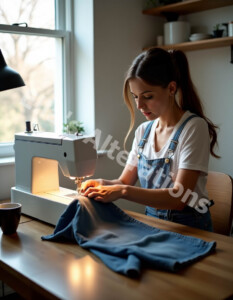
FAQs:
What is the difference between a seamstress and a tailor?
At first glance, a seamstress and a tailor might seem to do the same job — both sew, alter, and repair clothing.
Most seamstresses are self-taught or learned informally through family or hobby sewing.
A tailor, on the other hand, is a trained professional with deep knowledge of garment construction, fabric behavior, fit, and design.
One mends garments. The other reimagines them.
Can a seamstress alter formal gowns and wedding dresses?
Wedding dresses and formal gowns are built differently from casual clothes.
Altering these materials is an advanced skill that requires technical precision and a deep understanding of how garments are constructed to hold shape, support the body, and flow correctly.
A seamstress who typically works on casual clothing may lack that expertise.
Additionally, mistakes on formalwear are far less forgiving.
Incorrect adjustments can distort the fit entirely — from an ill-fitting bustline to a train that no longer drapes properly.
Do tailors only work on suits and men’s clothing?
It’s a common misconception that tailors are strictly for men’s suits and trousers.
In reality, professional tailors work across a wide range of garments — for all genders — and are fully capable of altering, reshaping, and customizing women’s clothing with the same level of expertise.
In fact, many of the most intricate and skill-intensive projects tailors handle involve women’s pieces like dresses, skirts, blazers, jackets, and even bridalwear.
The confusion likely comes from the traditional roots of tailoring, which historically focused on men’s suiting.
But modern tailoring has evolved.
Today’s skilled tailors understand the unique construction and design differences between men’s and women’s garments.
They know how to fit curves, adjust for bust and hip proportions, and manipulate fabrics to flatter a woman’s silhouette while maintaining the original structure and elegance of the piece.
Tailors frequently work on women’s suits, evening gowns, jumpsuits, tailored dresses, and coats.
They handle everything from sleeve adjustments and waist shaping to complex restyling.
The key difference lies in the approach: while seamstresses often focus on surface-level changes, tailors go deeper — adjusting linings, reworking seams, or even rebuilding garments to enhance fit and flow.
Women especially benefit from tailoring when off-the-rack options fall short.
Whether it’s a power blazer that needs to fit your shoulders just right, a cocktail dress that’s gaping at the waist, or a designer coat that’s a little too boxy, a tailor can fine-tune every detail to fit you like it was custom made.
So no, tailors are not just for men or just for suits.
They are fit specialists, construction experts, and the secret behind clothing that feels like it was designed with you in mind.
If it’s structured, stylish, and worth wearing confidently, a tailor is your go-to — regardless of gender or garment.
Is it cheaper to use a seamstress?
Yes — on the surface, hiring a seamstress is usually cheaper than going to a tailor.
Seamstresses often charge less per job, especially for basic tasks like hemming, minor seam repairs, or replacing a zipper.
Their services are geared toward simple, low-risk alterations that don’t require deep reconstruction or precision fitting.
For everyday fixes on casual clothes, that lower price can be appealing and may be perfectly reasonable for what you need.
But here’s the catch: cheaper doesn’t always mean better — and it rarely means long-lasting.
Many seamstresses lack formal training in garment structure, professional-grade tools, and the experience required for complex jobs.
If a seamstress mishandles your garment, you may end up needing a second round of alterations, or worse, irreversible damage that leaves the piece unwearable.
In those cases, the “affordable” option quickly becomes more expensive than you bargained for.
Tailors, while typically more expensive upfront, bring long-term value.
They take a holistic view of fit and construction. Their work tends to be more durable, more flattering, and better suited to the garment’s design.
A tailor won’t just fix a hem — they’ll consider fabric weight, silhouette, movement, and proportion. You’re not just paying for stitches.
You’re paying for expertise, precision, and a flawless finish.
So yes, seamstresses are often cheaper — but the real question is whether the savings are worth the potential risks. For low-cost garments or quick fixes, they might be.
But when you’re dealing with formalwear, structured clothing, or anything you truly love, investing in a tailor will always give you more value per stitch.
Think of it as paying for peace of mind — and polished style — from the very start.
What training does a tailor typically receive?
Becoming a professional tailor isn’t just about learning how to sew — it’s a serious craft that requires years of hands-on training, discipline, and a deep understanding of garment construction.
Tailors go through a long and detailed journey, often starting with an apprenticeship under a master tailor, where they learn the fundamentals of the trade from the ground up.
Take Ella, for example — a master tailor with over 30 years of experience.
Her journey began with a 10-year apprenticeship under a seasoned master tailor, where she didn’t just pick up technical skills, she learned the rhythm and responsibility of the craft.
That means she spent a decade studying how different fabrics behave, how to cut patterns precisely, how to shape garments to individual bodies, and how to finish each piece with an impeccable eye for detail.
It wasn’t about quick fixes — it was about learning to build garments that last and flatter.
Tailor training includes everything from hand-stitching and pressing techniques to full garment construction, fitting sessions, and even fabric science.
Master tailors like Ella also develop the ability to identify posture, movement patterns, and body variations — key factors in creating flawless fits.
This isn’t just technical work; it’s deeply personal.
Every stitch reflects both experience and intention.
Formal tailoring programs or fashion design schools can provide a foundation, but the true mastery comes from years of working under guidance, refining technique, and learning how to adapt designs to real people with real lives.
By the time someone becomes a master tailor, they’ve seen thousands of garments, worked with every kind of fabric, and solved fitting challenges that no book could teach.
So when you trust a tailor like Ella with your clothes, you’re not just getting alterations. You’re getting a lifetime of knowledge, training, and passion sewn into every seam.
















Formal Wear Dresses Wedding Prom Pageant Mother Of Bride, Bridesmaid Mother of Groom Alterations.

About Us
#EllasAlterationsLLC #Seamstress #Tailor #Alterations #Sewing #Fashion #Style #CustomMade #ClothingAlterations #Dressmaking #Bespoke #GarmentCare #FitGoals #Wardrobe #FashionTips #DIYFashion #TextileArt #Craftsmanship #MadeToMeasure #SuitUp #WeddingDressAlterations #Menswear #Womenswear #FashionEducation #BehindTheSeams #SewingLife #Fabric #ClothingRepair #FashionBlogger (if applicable) #StitchPerfect #ProfessionalTailor
This article dives into the true differences between seamstresses and tailors, revealing why the two are not interchangeable. You’ll learn what defines each role, the level of training involved, and when it’s smart to choose one over the other. Spoiler alert: for anything beyond a simple repair, tailors are the pros to call. Whether it’s a wedding gown, a structured jacket, or a custom pair of trousers, tailors bring the skill and understanding needed to handle garments with precision and style. Think of this as your go-to guide for making smarter, more stylish decisions about who alters your clothes.
Address: 6986 Fort King Road, Zephyrhills FL 33541
Get Directions |
Book Your Fitting
Why Clients Trust Ella’s Alterations
Phone: +1 813-445-8894
Email: admin@ellasalterations.com
Hours:
